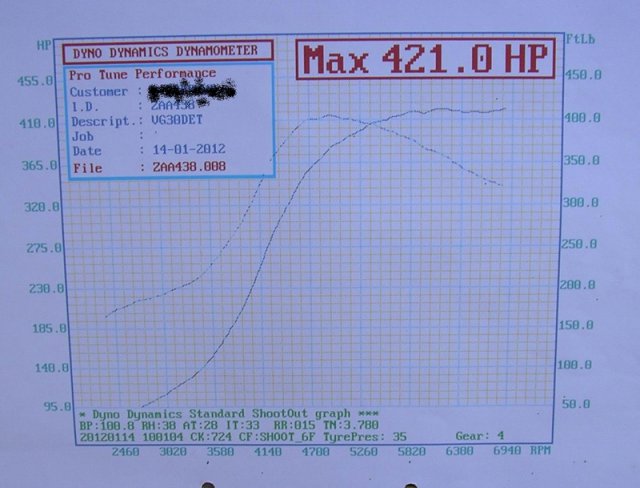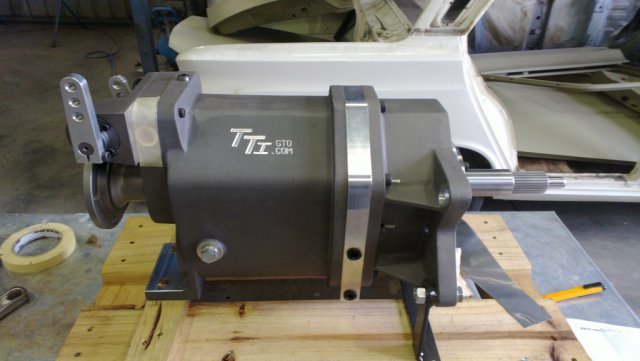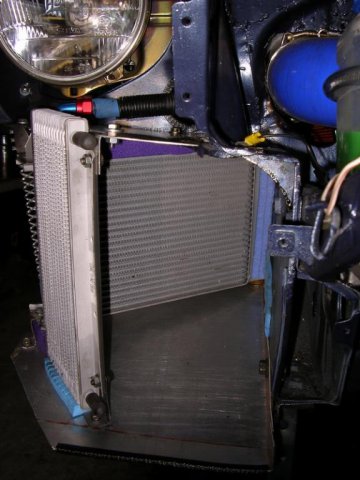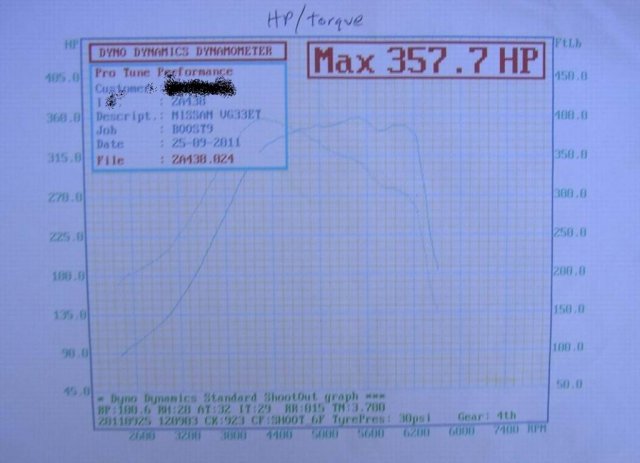-
Posts
3154 -
Joined
-
Last visited
-
Days Won
15
Content Type
Profiles
Forums
Blogs
Events
Gallery
Downloads
Store
Everything posted by 260DET
-
The finish on the cams looks a bit rough to me, most noticeable in the first pic, cam on the right. It also looks stepped. Comparing finish with some new Tomei cams and some others that were reground.
-
Believe that Electramotive used special head castings G, what was 'special' about them is an unknown. Maybe something like the NISMO ones. What would be informative is a technical review of the E engines but unfortunately the chance for that is long gone. They did use a different lower plenum design which looks like it had much larger runners but it's my understanding that a tweaked stock lower plenum is all that is needed for 400 whp. Maybe the better flowing E lower plenum somehow overcame or minimumised the head restriction, who knows. Agree that there is nothing inferior about a good two valve design for power, up to around 8000 rpm anyway. Which is one of the reasons why I tried the VG33ET. Oh well, life would be dull if we all did the same easy engine thing. Have to have a look at your L28ET project G, is it on this forum?
-
Hmmm, that is not my post. I know of Top End from way back, bought some pistons from them at least two years ago.
-

Brainstorming Aero ideas for Windtunnel II
260DET replied to JMortensen's topic in Windtunnel Test Results and Analysis
Your proposal #2 sounds interesting JM, I have just about given up on trying to work out how such a device would work but it would be easy to test so that is a big plus. -
Given the commonality of systems as previously mentioned, for comparison below is the VG30DET dyno sheet. Note the very useable 3000 rpm power spread and comparing the torque figures between it and the VG33ET we see that the DET has 405 ft/lb @ 4900 while the ET does 395 ft/lb @ 4200 rpm. The ET starts off well but is unable to go on with the job of delivering the required power once revs rise.
-
Appreciate your effort G and I will reread and think further about what you have said . In the meantime here is a quick response. The principle I am applying in all of this is that the less the engine resistance to flow is then the more it will flow at the same boost level when compared with an engine with a higher resistance to flow. Which is why the GTR and 997 engines were mentioned. If they did not have very efficient head flows then they would not make the power that they do at the boost levels they use. In other words, increased boost will only partially compensate for poor head flows and there comes a time when increasing the boost further offers little flow improvement and excessively rising inlet temperatures. Just like a garden hose with an adjustable nozzle. Adjusting the nozzle tighter increases pressure but restricts flow just like a 'tighter' head restricts flow. And flow/volume is what we want at the lowest pressure we can achieve. I'm not sure what quoting the Electramotive engines achieves. No doubt they replaced their turbochargers regularly using such high boost and of course their heads were way better than what we have. Their inlet temps must have been sky high which may be acceptable in a high level race engine just like running water thin oil is. But not practical for us mere mortal amateurs who like a bit of a safety margin.
-
Thanks for taking the time to look at this G, but honestly I cannot see how a VG30ET using stock heads and valves can make more power than the subject VG33ET irrespective of what turbo was used. A turbo will only flow what the engine allows so I can't see how more boost can overcome engine flow limitations to any significant degree. Sure it may be possible to spike a high power figure on a dyno, I've seen this happen myself, but we are talking sustainable power for the real world. Plus the GTX3582R is a great turbo, as proven on the DET engine, and very likely a better and cooler performer than any older turbos used in the past. The testing that was done with the 33 involved using all the bolt on parts and systems that have been proven previously and since to produce more power and be reliable with the DET engine. Even the intake system was the same up to the plenum which itself was a similar custom made job. Then we have the power outputs of the GTR and 997 engines mentioned previously which work out between them at 115 hp per liter atw assuming a 20% power loss. To get just 400 hp atw from a ET requires 133 hp per liter. Can we seriously say that a VG30ET engine using stock heads and valves produces a lot more power per liter than two of the best modern high performance turbo engines in the world? Then we have the pro advice I have, as previously mentioned, which basically says to get 400 whp out of the 33 will require bigger valves and a significantly higher lift cam than the present items. Which all accords with the results so far. Wish this was not so but no point in flogging a dead horse
-
S**t, you went to all that trouble after I hit a wrong key, sorry. Yeh, GTX3582R it is, a dream turbo on the DET with virtually no lag and inlet temps hardly more than ambient. Have to knock the boost back to 5psi on the street otherwise it spins wheels and attracts unwanted attention. As to the maximum boost of 15 psi used on the ET, we did try more boost but it resulted in very little more power and significantly increased inlet temps. Given the good work done on it the obvious conclusion was that the heads objected to pushing more airflow. In the circumstances I find it very hard to believe that others with less or no more apparent overall development put out more power than mine. See previous info on bigger inlet valves and higher lift cam required to get to 400 whp, that advice from a proven independent pro source too.
-
See the Sequential Shift thread.
-
Don't know what pricing is like in the US but in the continent below the equator the TTI box is the cheapest by a fair margin. Sequential adaptors on stock boxes have a bad rep around here, they basically are not used. Of all the things I would like for a circuit car a good sequential would be #1, well, maybe an auto too. For an amateur an auto may work out better seeing that the aim is to reduce the work load to concentrate on the important things. Like not banging into stuff. Note that the TTI is a dog box, no syncro, dog clutch engagement for each gear. Like a motorcycle.
-
Link Mr Lazy OP?
-

Oil cooler mounting and air management.
260DET replied to peej410's topic in Windtunnel Test Results and Analysis
Easy. What you can't see is the expanded mesh at the back of the coolers. Basically fits in with the OE guard/fender shape. -
Same turbo G, GTX3585R, thought I'd made that clear, sorry. As can be seen from the dyno sheet the 33 spooled up like a boss, how could the turbo in that situation be responsible for anything negative as far as inlet temps go is beyond me. Incidentially both engines use/used their original turbo manifolds, very similar dumps into the same exhaust system. Why the differences seem so obvious to me is because we have a comparison betwwen two different yet comparable engines using as far as practical the same systems, as mentioned previously. A better word/phrase for 'flat' when describing torque curves would have been 'useable in a race situation' over a 3000rpm range. Fifteen PSI boost was used as a practical comparison for a road/track car, a compramise between power and engine life/reliability. A few horsepower here and there do not matter much, driveability is everything for a amateur racer when trying to hold it all together in a time compressed scenario. Over to you
-
Some more facts not claims, this time concerning the ability of the VG33ET to breathe and so make power, compared with a VG30DET which is presently in the Z. Both using similar or the same systems, like exhaust, turbo, IC and so on. VG33ET - inlet valve area 907sq mm, 358whp @ 15psi boost VG30DET - total inlet valve area 1385sq mm, 421whp @ 15psi boost. Further, on the same dyno with the same operator, the DET continued to make good power well past 15psi boost while the ET did not. An indicator of this was the high inlet temps being generated by the ET and not by the DET. The simple fact of the matter, as illustrated above, is that the stock ET heads will not flow sufficiently to make more power without the inlet valve and cam work mentioned previously. I wish I was wrong as this little exercise has cost me $.
-
-

Oil cooler mounting and air management.
260DET replied to peej410's topic in Windtunnel Test Results and Analysis
Pic of mine mounted as previously mentioned. Power steering cooler on the left forms part of the duct to the engine OC. -

Oil cooler mounting and air management.
260DET replied to peej410's topic in Windtunnel Test Results and Analysis
-
Unbelievable, some of the usual VG30ET wishful thinking power posts here. Go back and read my original post plus the modern hi-po engine HP details and then comment, mine was no half arsed engine project eg MoTec M600 ECU, M&W CD ignition with a crank trigger, all dyno tuned by a V8 Supercar experienced operator. I wasted a few thousand on R&D but who cares, internet opinion and power figures are always right.
-
That's with the VG30DET engine, not the VG33ET donk.
-
OK lets look at a couple of modern multi valve highly developed turbo engines in high performance cars. The GTR with a 3.8 liter engine manages around 540 hp while the Porsche 3.6 liter 997 does around 520hp. Knock off say 20 percent for driveline etc losses on a wheel dyno and we have 436 and 416 hp ATW. So the claim is that the single cam two valve VG engine with a lot less displacement and OE heads will do better than the Nissan and Porsche efforts? C'mon, get real.
-
IMHO 357whp is about as good as can be expected from the head restricted single cammer. Stock VG30ET delivered what, a bit over 200hp at the flywheel? 33 as it stands will do very little better than a 30 due to head restrictions. More than doubling stock power using fairly modest improvements is pretty spectacular I reckon. More than that? Hmmmmm.
-
Yeh, 15psi boost.
-
And to complete the story here is the VG33ET dyno sheet showing that characteristic single cam VG power dip.
-
What's required to get 400whp (500 at the flywheel) according to the pro I consulted, considering the head only. Inlet valves 3mm oversize out to 45mm (present oversize Ferrea are 43), cam lift up from present S2 JWT lift of 11.76mm to 12.7mm minimum. Followed by turbo specific head work.
-
Will have to post a pic of my bonnet vents some time, they are aero efficient as has been proven by trial and error and real time race track use in damn hot weather. Call me slack




